Introduction to growing Avocado in containers
Botanically Avocado is termed as ‘Persea Americana’. Growing Avocados indoors is fun and easy. Growing your Avocados is a simple and satisfying project for beginners or experienced gardeners, from kids to adults. You can even grow it in a flowerpot at home. You can keep growing Avocado as a houseplant by giving proper exposure to sunlight. A plant will get messy without sufficient light. Growing Avocados in containers indoors will require enough amount of bright light.
A step by step guide to growing Avocado in containers/pots
Avocado is one of the easiest trees to grow from seed. Growing Avocado in containers can start with a pit but is the most successful and healthy tree. It is not suitable for cooler climates to grow outside where the temperature is likely to drop below 10°C. Individual gardeners should plant their Avocado tree in a pot and move it from colder climates around to ensure optimal exposure to favorable climatic conditions.
Different varieties of Avocado growing in containers
Avocado genetics are completely different, such that every seeding is a new variety. Only a very few seedlings will turn out suitably delicious fruit for people. Over the years many hundreds of varieties have been named, mostly selected for their prime fruit quality.
There are different varieties of Avocados depending on color, texture, shape, and so on. Some Avocado varieties are:
- Choquette – has smooth glossy skin with watery flesh
- Gwen – skin turns from green to brown to black to purple to red
- Hass – similar to Gwen in taste and appearance
- Pinkerton – rough skin that is easy to peel and the small seed inside the creamy flesh
- Fuerte – pear-shaped and available for eight months of the year
- Reed – lighter, more subtle flavor and is about the size of a softball
- Zutano – lighter, yellow-green skin and has a mild taste that’s unlike many other
- Bacon – light brown skin and easy to taste
- Cleopatra – small dwarf Avocado
Preparing the containers for growing Avocado
In case if you miss this: Growing Grapes in Pots from Seed and Cuttings.
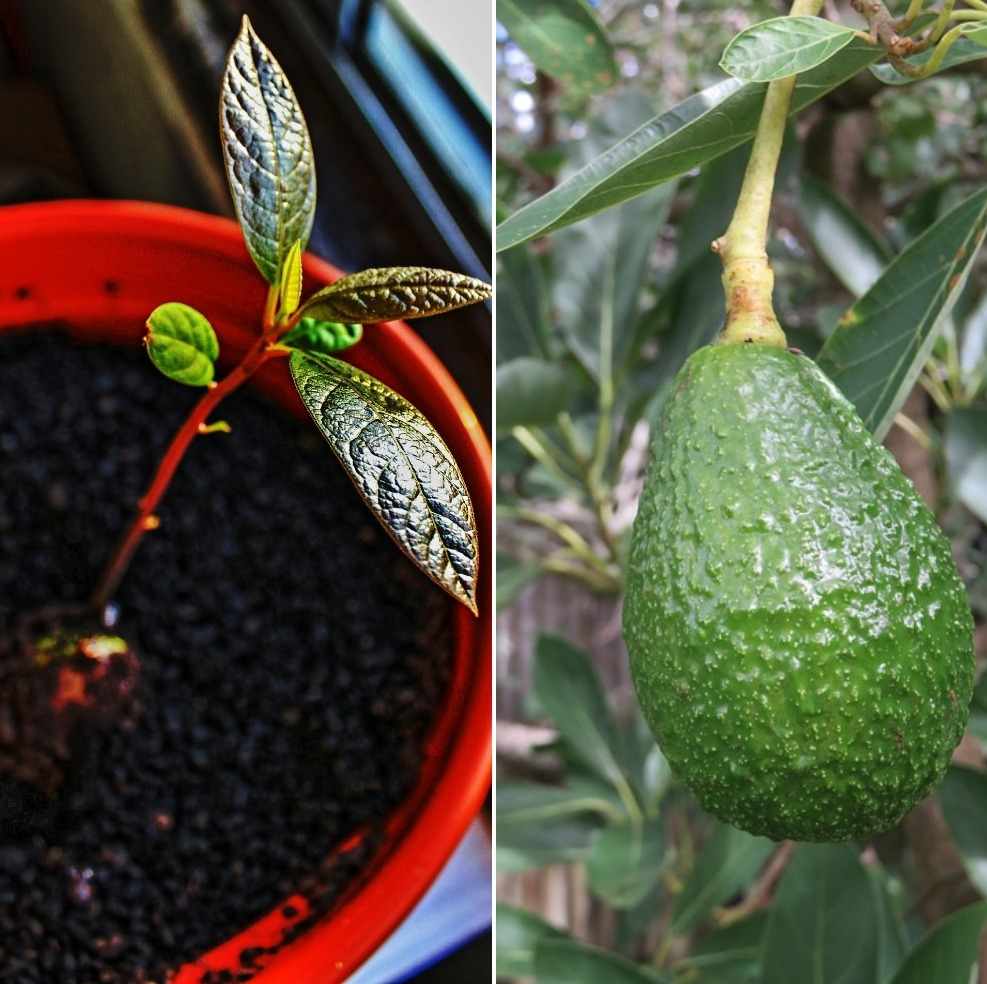
Growing Avocado trees is simple. If you are planning to grow the Avocado tree in a pot for a lifetime, choose a terracotta pot that is at least 10 inches across and twice as deep as the roots with drainage holes in the bottom right from the start. For a loose, fast-draining composition, use a potting mix with compost blended with sand. Good drainage is key to good growth. Avocado trees have a relatively shallow root system. If fully soaked for more than two days, the roots will rot and the plant will die. Loose and sandy, but fertile soil are important and that provides excellent drainage. To drain the excess water in a pot, before filling it with the soil you can also lay some stones at the bottom.
Taking care of an Avocado plant grown in a container
The following will help for taking care of Avocado trees:
Temperature and Light
Avocados are very sensitive plants with some specific weather conditions. They do best in warm temperatures, ideally between 16° to 30°C– which makes them excellent indoor plants. They will enjoy full sun and may benefit from a bit of supplemental light during the winter months.
Watering
Trees typically need to be watered two to three times a week. As the roots reach out into the bulk soil, more water can be needed means once a week after a year. When watering the tree, let the soil soak well, and then allow it to dry out somewhat before watering again. Like most of the plants, you don’t want the tree to get too dry. The rule of thumb for grown trees is about 20 gallons of water a day during the irrigation season. Seedlings anyway will require quite a bit less amount of water, of course. Check the soil before watering each time to make sure it has dried somewhat. From around the roots, if the soil can hold the impression of a hand when squeezed, it has adequate water.
Soil
Avocado trees thrive in well-aerated and loose soil. In particular, the main soil types that encourage desired fruit growth are limestone, sandy loam, and decomposed granite. The suitable soil’s pH of the Avocado tree is around 6 to 6.5. Make the mound 1 to 2 feet high and 3 to 5 feet around. Don’t put gravel or anything else like planting media in the hole. How much the roots get into the bulk soil will result in a better tree soon.
Fertilizing
For young Avocado trees, the recommended composition to fertilize is ½ to 1 pound of actual nitrogen per tree per year. You can spread it out over several applications as long as it totals ½ to 1 pound of nitrogen. Zinc is the other important nutrient for Avocado trees. Ordinary home fertilizer for houseplants will normally work.
How to grow an Avocado indoors
There are two ways to grow your Avocado trees. Avocados can be grown from an Avocado pit harvested from a grocery store Avocado, or they can be grown from nursery stock.
Growing an Avocado from seed in containers
You may also check this: Growing Hydroponic Blueberries.
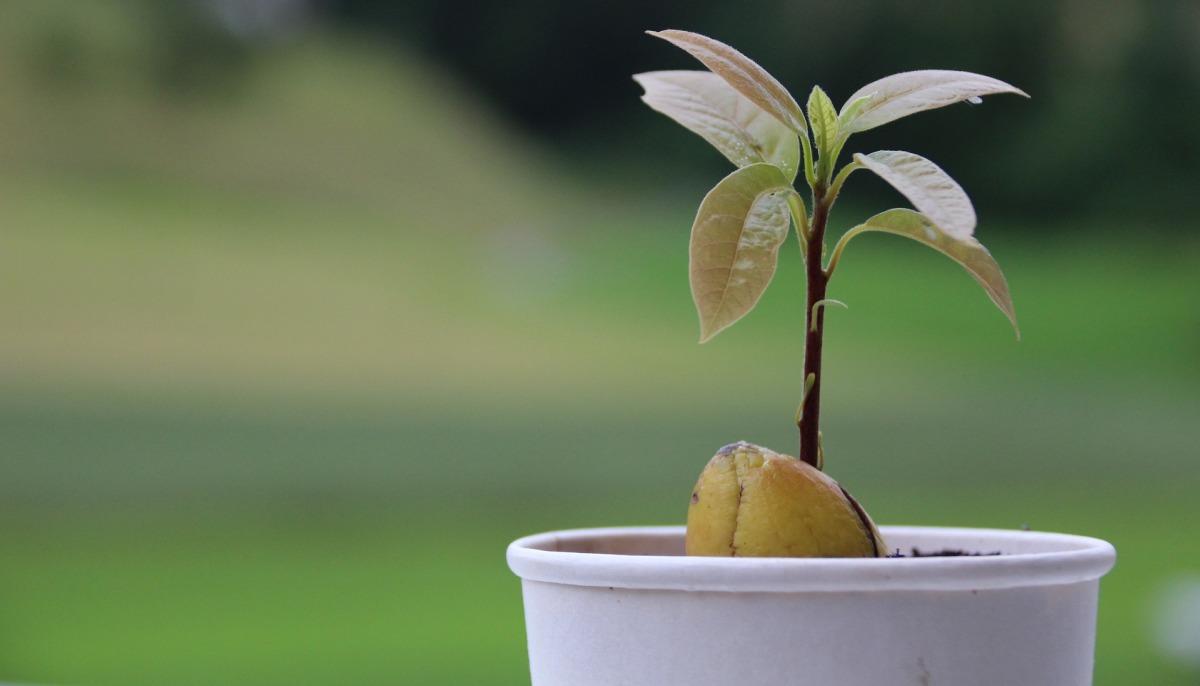
Step1: Remove the pit and clean it carefully
Save the seed. When you cut open a ripe Avocado, scoop out the seed carefully, rinse off with warm water for about a minute to eliminate mold and bacteria potential. Make sure you do not remove the brown seed cover.
Step2: Make sure which end is up and which end is down
Mount the seed in water. Choose a glass container where you will rest the seed until it grows roots. The slightly pointier end is the top, and the flat end is the bottom. To sprout from the pit, you will need to place the bottom root end in water. So it’s very important to make sure which end is the ‘top’ and which is the ‘bottom’ before piercing it with toothpicks.
Step3: Use three toothpicks to suspend it
Punch the sides of the seed with three toothpicks that will hold the seed up so that it doesn’t sink into the water. Stick them at a slight downward angle when you set this over a glass into the Avocado seed, spaced evenly around the Avocado. These toothpicks will allow you to rest the bottom half of the Avocado in water, so therefore the toothpicks need to be wedged in there firmly.
Step4: Place Avocado seed in water and monitor
Set on a quiet windowsill with sunlight. It’s helpful to use clear transparent glass so you can see easily when roots start growing, and also when the water needs to be changed. Monitor the water. Check the water level every day. Be sure the bottom of the seed is submerged. Change the water twice or thrice a week to prevent molds, bacteria, and fungus growth, which can doom your little Avocado sprout.
Step5: Wait for Avocado seed to sprout
Let the seedling grow. Don’t disturb and leave the seed in the water container until it grows. This will take several weeks. After six weeks, roots and a stem shoot should begin emerging from the seed. Continue to change out the water in the glass and wait until the stem is between six and seven inches long. Cut it back to three inches this will encourage new growth and wait for it to sprout leaves.
Step6: Transplant the seedling into a pot
In case if you want to check this: Growing Lemongrass Hydroponically.
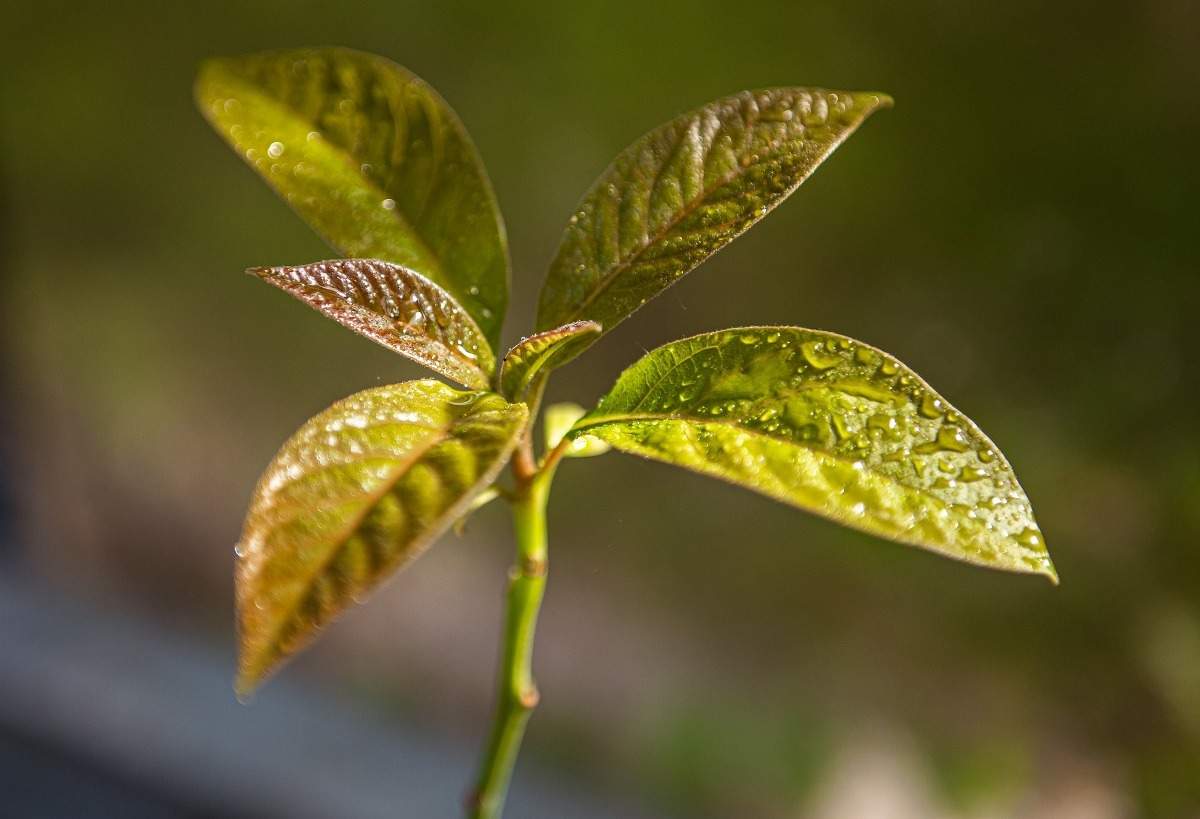
Move the sprouted pit to an unglazed terra-cotta pot that is at least 10 inches (25 cm.) across and twice as deep as the roots. For a loose and fast-draining composition, use a potting mix with compost blended with sand. Leaving the top half of the seed exposed. Place on a sunny windowsill. Avocados love the sun – the more sun the better.
Step7: Watch carefully and water it
Provide full sun and frequent watering with an occasional deep soak when the soil becomes dry. Fertilize during the growing period (spring and summer). The soil should always be moist, but not completely soaked. Yellowing leaves are a sign of over-watering, then let the plant dry out for a few days.
Step8: Pruning and trimming
When the stem reaches 12 inches tall, pick off the top two sets of leaves. When the plant grows another 6 inches pinch out the 2 newest sets of leaves on top. This will encourage the plant to grow more leaves and making it bushy. Annual pruning of Avocado tree just before the spring growth spurt is recommending afterward.
Step9: Wintering
Baby Avocado trees can kick it outdoors in summer, but if you live anywhere where it gets cooler than 24°C, you’ll need to bring them back indoors in the fall/winter, before the temperatures fall.
Growing an Avocado from a young tree
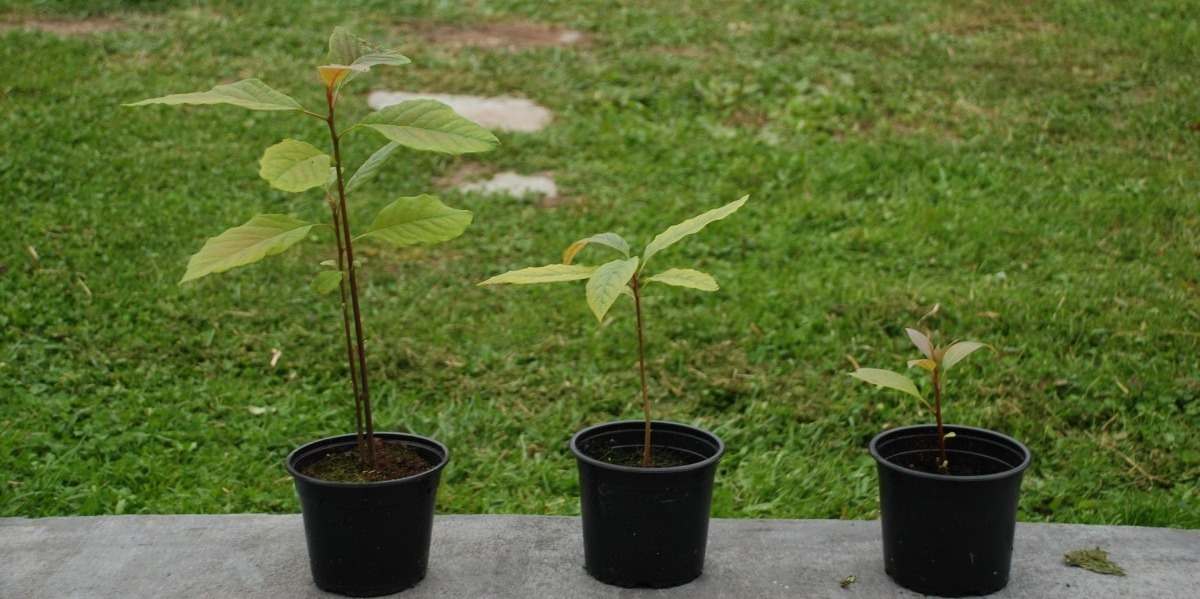
Plant your tree in March through June. There is always the risk of sun damage if you plant during the summer because Avocado trees when they are young will not absorb water very well. Place the pot in a location where it receives full sun. As its root system is very sensitive, more care should be taken and not disturb it when transplanting.
Growing an Avocado tree purchased from a nursery is going to be easier than growing from seed. However, these are delicate plants so that it will require very specific conditions to flourish and growing an Avocado tree that bears fruit. The larger the pot, the likelier the plant will start growing vigorously right away.
Pests and diseases of Avocado
There are some pests and diseases of Avocado. Root rot and anthracnose are the 2 main diseases that affect the Queensland Avocado industry. The fruit-spotting bug is the main pest.
Pests
- Fruit-spotting bug
- Banana-spotting bug
- Helopeltis
- Queensland fruit fly
- Red-banded thrips
- Red-shouldered leaf beetle
- Swarming leaf beetles
- Leaf roller
Diseases
- Cankers
- Fruit rots
- Root rots
- Sunblotch
- Wilts and blights
How to save a dying Avocado tree
Root rot and fungal diseases are one of the leading causes of Avocado tree death. There are 9 steps to follow to save a dying Avocado tree:
- Identify the Issue
- Use Gypsum
- Use Mulch
- Don’t Water as Much
- Test the Water
- Check the Drainage
- Replace with New Soil
- Use good fertilizers
- Use fungicides
Harvesting Avocado fruits
When your plant begins to set fruit, it may set a huge number at first. It will most likely drop a large number of these fruits, so don’t panic – it’s perfectly normal. Additionally, unlike many fruit trees, Avocados do not ripen on the plant. Once the fruit reaches a mature size, pick one and let it sit on a shelf for a few days. If they shrivel up or never become soft, it isn’t time. Pick another couple of fruits every week until they ripen. At that point, pick as you desire and leave what you don’t want on the tree.
Some commonly asked questions about growing Avocado in containers
You may also check this: Growing Ginger Hydroponically.
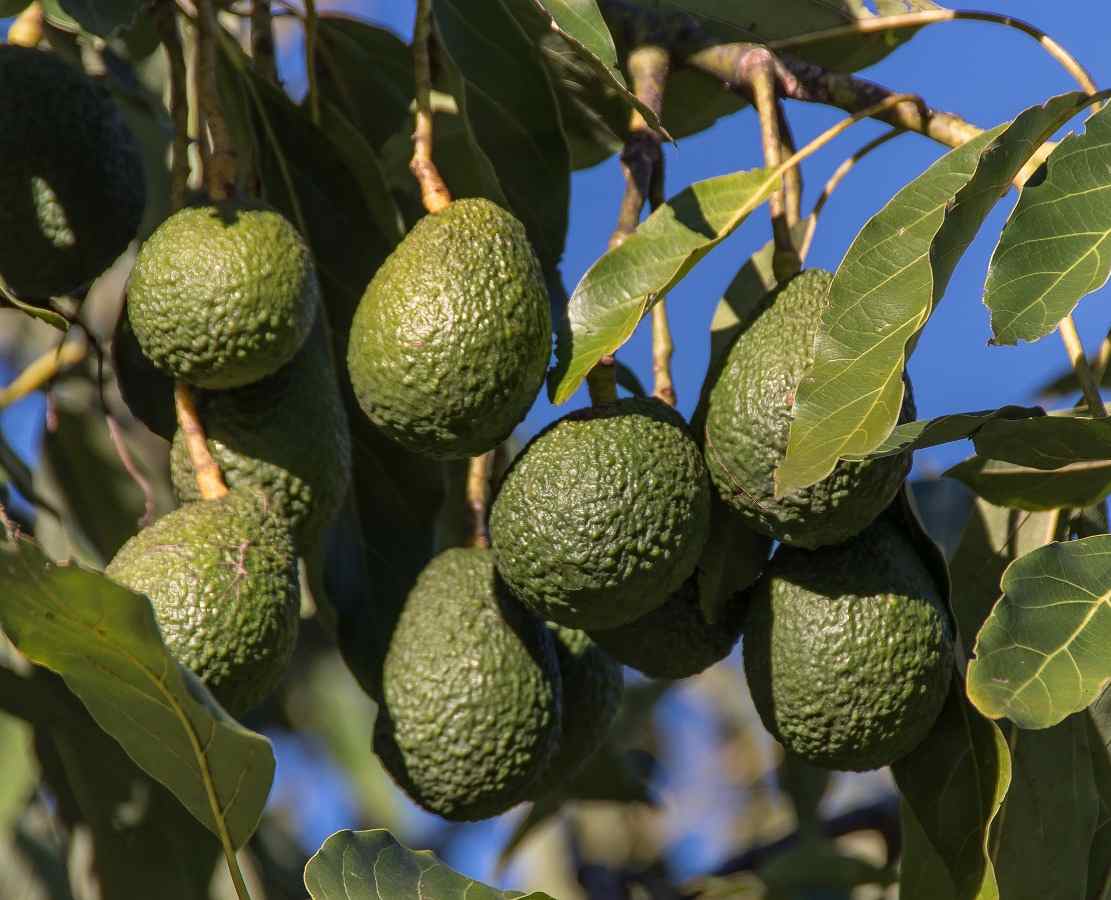
How long does it take for an Avocado tree to bear fruit?
Be patient about seeing fruit. If you have purchased and planted a tree, you can probably expect to see your first fruit three to four years after planting. It can take anywhere from five to 13 years if you are growing from seed before the tree is mature enough to set fruit.
Are coffee grounds good for Avocado trees?
To help your Avocado tree to thrive you can consider using coffee grounds, compost, or fish emulsion.
How tall will an Avocado tree grow indoors?
Growing to over 20 feet, most commercials are not suitable for growing indoors long-term grown varieties of Avocados. For indoor cultivation, there are many dwarf varieties with mature heights between 8 and 16 feet.
Do Avocados like direct sunlight?
Like bananas, Avocado plants thrive in full sun. They will tolerate some shade, but potted indoor plants generally need the brightest spot you can find. If you’re starting from a seed, the seed can be kept on a bright windowsill until roots form, and the first leaves emerge.
What fertilizer is best for Avocado trees?
The major nutrients that the Avocado tree needs are Nitrogen – Phosphorous – Potassium(N-P-K) and Zinc(Zn) is the other important nutrient for Avocado trees. For young Avocado trees, the recommended composition to fertilize is ½ to 1 pound of actual nitrogen per tree per year.
How much space does an Avocado tree need?
Work in the sand or other gritty matter to increase its drainage if you have soil that doesn’t drain well. Also, you need to leave 8 to 10 feet (2.5-3 m.) from buildings and up to 30 feet (10 m.) of space apart when planting Avocado trees.
What soil should I plant my Avocado tree in?
Avocado trees thrive in well-aerated and loose soil. In particular, the main soil types that encourage desired fruit growth are limestone, sandy loam, and decomposed granite.
Can I cut the top off my Avocado tree?
Cut the top of the Avocado tree when it reaches approximately 12 inches in height, cutting the tree back to 6 inches. This will encourage new growth. Again allow the tree to regain its original height then repeat the trimming as before.
In case if you are interested in this: Profits from Hand-Made Soap Making Business.
very informative, would try the methods stated above as I have tried to grow avocadoes for some time in a compost with little success. How can I get the text in order to do follow up step by step